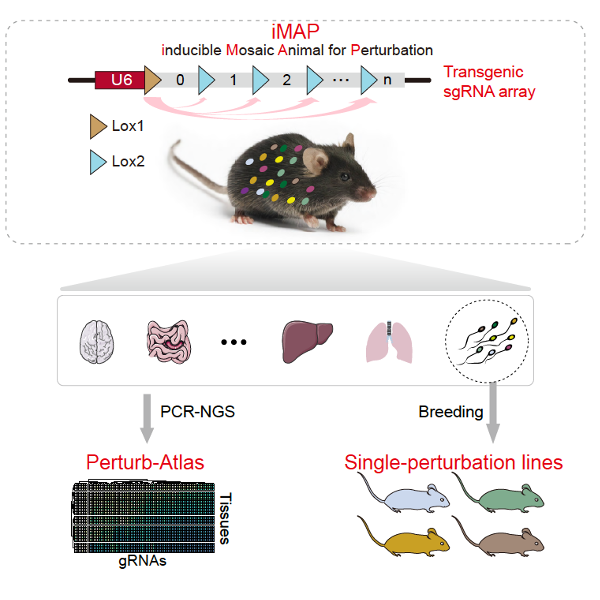The sequence of the human genome is currently well-known, but the functions of the 20,000 protein-coding genes in over 500 types of cells remain unsolved, which severely hampers disease diagnosis and treatment. To systematically decipher the functions of all the genes in all the cells, one needs to inactivate (perturb) these genes and characterize the resulting cellular phenotypes, namely to map the “Perturb-Atlas”. Successful mapping of the atlas will become a watershed in the history of biomedical research, because the atlas will enable one to discover the basic function of any gene in any cell type with the click of a computer mouse, rather than spending years of labor, as is typically the case today. However, suitable methods for mapping the Perturb-Atlas have remained elusive until now.
On July 22, Chi Tian’s lab at SLST reported online in Cell a novel mouse gene targeting method termed iMAP (inducible Mosaic Animal for Perturbation), which they used to rapidly decode the basic functions of 90 genes in 39 tissues in mice, thus constructing the first miniature “Perturb-Atlas” in the world. This study suggests a suitable method for Perturb-Atlas mapping.

iMAP combines Cre-Lox and CRISPR-Cas9 technologies. At its heart is a novel transgene comprising 100 tandemly linked gRNA expression units. Upon pharmacological activation of Cre, all the gRNAs can be induced in the mice but only one of them in a cell, which consequently disrupts its target genes in the presence of Cas9. This way, the mice can be converted into mosaic organisms which can be used to map the Perturb-Atlas, and also for rapid derivation of 100 conventional single-gene disrupted lines, which greatly reduce the cost of their production. Deploying iMAP, the researchers mapped a mini atlas profiling the perturbations of 90 genes across 39 tissues, and also derived many single-gene disrupted lines. This work sets the stage for mapping the complete Perturb-Atlas.
The first authors are five Ph.D. students from SLST. Chi Tian is the sole corresponding author. ShanghaiTech is the affiliated institute.

